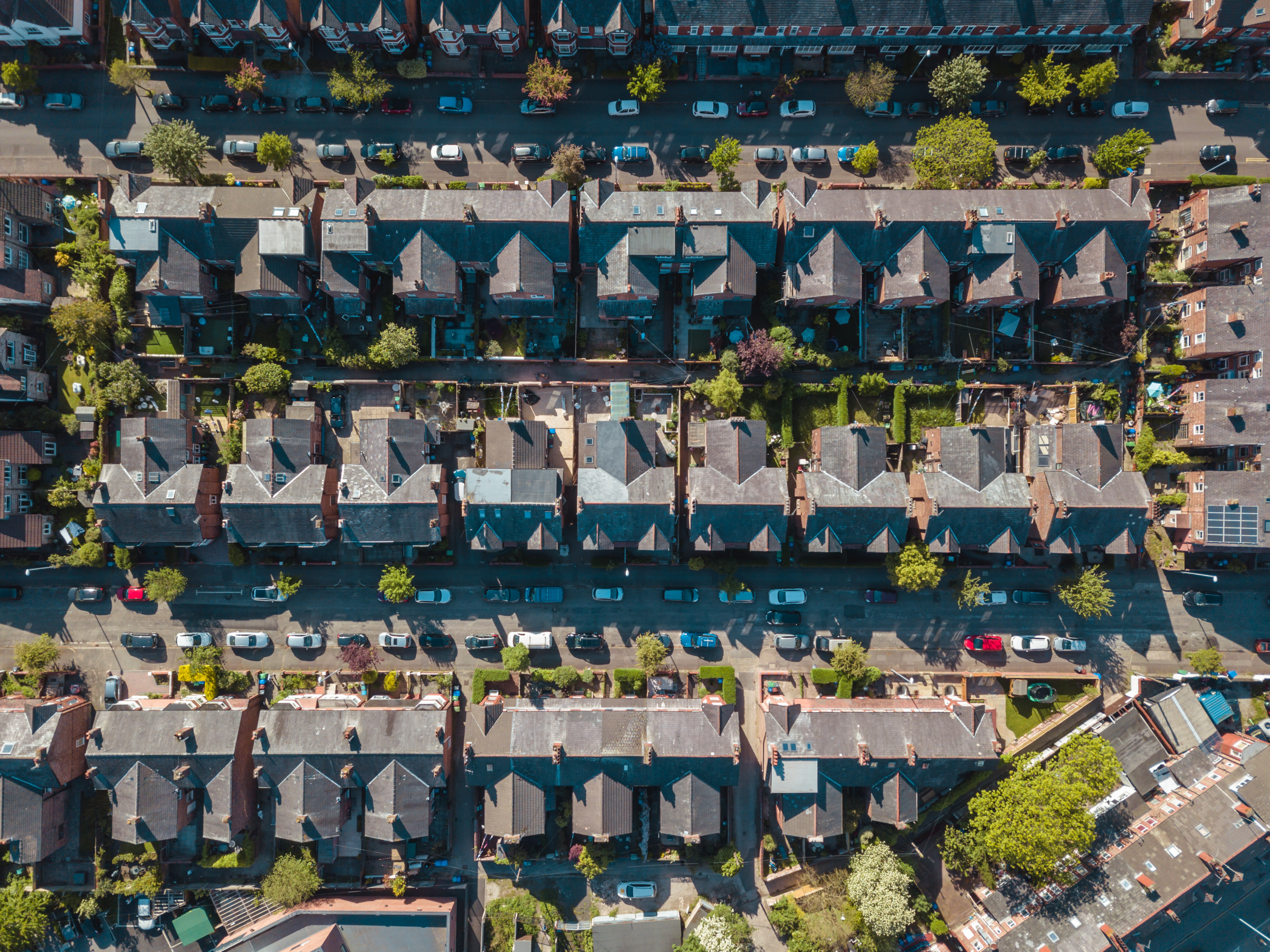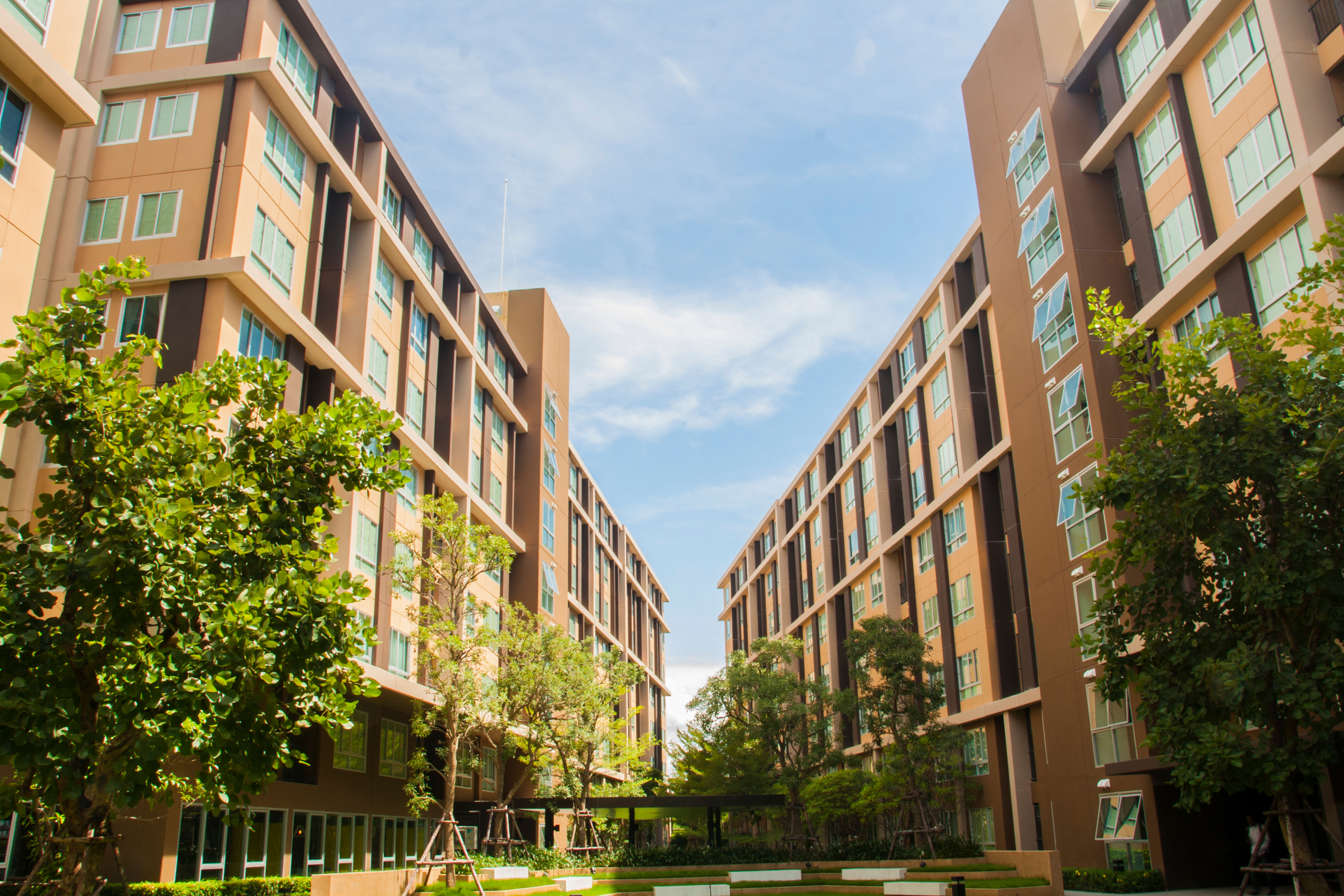
Table of contents
- What is the meaning of lease-up?
- What is a good lease-up period?
- Lease Up Marketing Ideas
- Lease up marketing ideas for Luxury Class A Properties
- Lease Up Marketing Strategies for Workforce Housing
- Lease Up Ideas for Student Housing Community
- Lease Up Ideas for A Senior Living Community
- Lease up strategy for serviced apartments and corporate housing
- Lease up Marketing Strategies for Co-living communities
- Frequently Asked Questions
Suggested Posts
What is the meaning of lease-up?
Multifamily lease-up is a term used in the real estate industry to describe the process of marketing, leasing, and stabilizing the occupancy of a newly constructed or recently renovated multifamily residential property, such as an apartment complex or condominium development. During the lease-up phase, property managers and leasing agents in multifamily community work to attract and secure tenants for the available units with the goal of reaching a high level of occupancy as quickly as possible. It involves marketing the property, attracting prospective tenants, and signing lease agreements until the property reaches a stable occupancy level.
Lease-up strategies often include:
- Market research: Understanding the local market, competitors, and target demographics to help create a compelling value proposition for prospective tenants.

Marketing and advertising
Utilizing various channels to promote the property, such as digital marketing, social media, print materials, and signage.
Incentives and promotions
Offering special deals or discounts, like reduced rent, waived application fees, or move-in specials, to attract new tenants.
Showings and open houses
Hosting events to showcase the property and its amenities, allowing potential tenants to tour the units and get a feel for the community.
Tenant screening and leasing
Reviewing applications, conducting background and credit checks, and signing lease agreements with qualified tenants.
Once the property reaches a stable occupancy rate, typically between 90-95%, the lease-up phase is considered complete. At this point, the focus shifts to maintaining high occupancy, paying rent, and tenant satisfaction through effective property management.
What is a good lease-up period?
A good lease-up period varies depending on the size and location of apartment building, the property, the target market, and local economic conditions. Generally, a lease-up period of 12 to 18 months is considered reasonable for most properties. However, this timeline can vary significantly depending on the factors mentioned above.
How to be successful at lease-ups as a property manager?

To be successful at lease-ups, a property manager should:
- Develop a comprehensive lease-up strategy that includes targeted marketing, competitive pricing, and incentives.
- Understand the local market and the needs of the target demographic.
- Maintain strong communication with property owners, investors, and stakeholders.
- Continuously monitor and evaluate leasing progress, adjusting strategies as needed.
- Offer excellent customer service and prompt response to inquiries.
- Utilize both traditional and digital marketing channels to reach a wider audience.
- Consider offering flexible lease terms and attractive move-in specials to entice prospective tenants.
Lease Up Marketing Ideas
Lease-up marketing ideas are essential for attracting potential tenants and reaching high occupancy rates in a multifamily residential property. Here are some creative and effective marketing strategies to consider:
- Develop a strong brand identity: Create a unique and consistent brand for the property, including a memorable name, logo, and color scheme. This will help distinguish the property from competitors and create a sense of identity for prospective tenants.
- Build an engaging website: Develop a user-friendly and visually appealing website that showcases the property’s features, amenities, floor plans, and location. Ensure it is optimized for mobile devices and includes a call-to-action for scheduling a tour or applying online.
- Utilize social media: Use platforms like Facebook, Instagram, Twitter, and LinkedIn to share updates, showcase photos and videos, and engage with potential tenants. Create a content calendar to ensure regular posts, and consider using paid advertising to target specific demographics.
- Virtual tours and videos: Offer virtual tours or video walkthroughs of the property and units, allowing prospective tenants to explore the space remotely. This can be especially helpful during times when in-person showings may be limited.
- Host events and open houses: Organize on-site events, such as open houses, community gatherings, or themed parties, to encourage potential tenants to visit the property and experience the community atmosphere.
- Partner with local businesses: Collaborate with nearby businesses to offer exclusive discounts or promotions to your residents. This can create a sense of community and make your property more attractive to potential tenants.
- Offer referral incentives: Encourage existing residents to refer friends, family members, or colleagues by offering incentives such as rent credits or gift cards.
- Utilize search engine optimization (SEO) and pay-per-click (PPC) advertising: Optimize your website content for relevant keywords to rank higher in search results, and consider using PPC advertising to target specific audiences searching for apartments in your area.
- Traditional marketing: Use print materials like brochures, flyers, and direct mail campaigns to reach potential tenants who may not be active online. Additionally, consider advertising in local newspapers or magazines.
- Maintain positive online reputation: Encourage satisfied residents to leave positive reviews on popular review platforms, and promptly address any negative feedback. A strong online reputation can significantly influence prospective tenants’ decisions.
Remember, the effectiveness of these marketing ideas may vary depending on your target audience and local market. Be sure to track the performance of your marketing efforts and adjust your strategies as needed to optimize results.
Lease up marketing ideas for Luxury Class A Properties

Marketing to luxury properties and Class A renters requires a focus on highlighting the upscale features and amenities of the property. Here are some unique lease-up marketing ideas tailored to this niche audience:
- Exclusive partnerships: Collaborate with luxury brands, high-end retailers, or upscale local businesses to offer exclusive benefits, discounts, or services to your residents. Examples include partnerships with luxury car dealerships, high-end fitness studios, or gourmet food delivery services.
- Curated experiences: Host exclusive on-site events and experiences that cater to luxury preferences and interests, such as wine and cheese tastings, art exhibitions, or cooking classes with renowned chefs.
- Influencer marketing: Partner with local or national influencers, such as interior designers, lifestyle bloggers, or social media personalities, who can showcase your property and attract the attention of their affluent followers.
- Virtual reality tours: Offer high-quality virtual reality (VR) tours of the property, allowing prospective tenants to explore the units and amenities in an immersive, interactive experience.
- Luxury print materials: Create upscale brochures, magazines, or lookbooks that showcase the property’s high-end features, with professional photography and high-quality printing.
- Sponsorship and charitable events: Sponsor local events that attract affluent attendees, such as charity galas, art shows, or sporting events. Consider hosting fundraisers or charitable events on the property to showcase your commitment to the community.
- Targeted direct mail campaigns: Send personalized, high-quality mailers to a targeted list of potential Class A renters, such as professionals in specific industries or members of exclusive clubs.
- Video marketing: Create professionally produced videos that highlight the luxurious aspects of the property and the surrounding neighborhood. Share these videos on social media, your website, and even in local high-end movie theaters as pre-show ads.
- Showcase testimonials from prominent residents: Request testimonials from current or past residents who have a strong reputation in the community or industry. Their endorsement can help elevate the property’s status and credibility.
- Concierge services and personal touches: Offer personalized concierge services, such as arranging for restaurant reservations, event tickets, or transportation, to demonstrate your commitment to an elevated living experience. Additionally, provide personalized welcome gifts or move-in packages to new residents to create a memorable first impression.
Remember that marketing to luxury properties and Class A renters requires a focus on quality, exclusivity, and personalized experiences. Tailor your marketing efforts to emphasize these aspects and create a strong sense of prestige and desirability.
Lease Up Marketing Strategies for Workforce Housing

Workforce housing refers to affordable housing options that cater to middle-income earners, such as teachers, healthcare professionals, public safety officers, and other essential workers. When marketing workforce housing, focus on affordability, convenience, and community-centered amenities. Here are some unique lease-up marketing ideas for this segment:
- Highlight affordability: Emphasize the cost savings and value-for-money that your property offers compared to other housing options in the area. Consider offering financial incentives, such as move-in discounts or rent credits for referrals.
- Local employer partnerships: Collaborate with local employers, businesses, or organizations to offer preferred rental rates or incentives for their employees. This can help attract potential tenants who work nearby and create a sense of community within the property.
- Transportation options: Promote the property’s proximity to public transportation, carpooling options, or bike-sharing programs to appeal to residents who value easy commutes to work.
- Community engagement: Organize events and activities, such as neighborhood cleanups, volunteer opportunities, or community workshops, that encourage residents to engage with each other and the surrounding community.
- Environmentally friendly features: Highlight eco-friendly features or initiatives within the property, such as energy-efficient appliances, recycling programs, or green spaces, which can appeal to residents who prioritize sustainability.
- Flexible lease terms: Offer a variety of lease terms, such as short-term leases or month-to-month options, to cater to the needs of workers who may have changing job situations or temporary work assignments.
- Targeted social media campaigns: Use social media platforms to target specific demographics, such as employees of nearby businesses, who may be searching for affordable housing options.
- Collaborate with local housing agencies: Partner with local housing agencies or nonprofit organizations that help connect essential workers with affordable housing options. They can refer potential tenants to your property.
- Showcase local amenities: Highlight the nearby amenities that cater to workforce residents, such as grocery stores, parks, schools, or fitness centers. Create a neighborhood guide to emphasize the convenience of living in your property.
- Resident testimonials: Encourage satisfied residents to share their positive experiences living in your community, either through online reviews or by featuring them in your marketing materials. Authentic testimonials can help build trust and credibility among potential tenants.
When marketing workforce housing, focus on the unique needs and preferences of the target demographic. By emphasizing affordability, convenience, and community, you can effectively attract and retain prospective residents in this housing segment.
Lease Up Ideas for Student Housing Community

Marketing student housing requires a focus on the unique needs and preferences of college and university students. Here are some lease-up marketing ideas tailored to this audience:
- Collaborate with universities and colleges: Establish partnerships with nearby educational institutions to be listed as a preferred housing option for their students. Attend on-campus housing fairs, distribute marketing materials, or sponsor student events to increase visibility.
- Offer furnished units: Provide furnished apartments or rooms to make the moving process easier for students who may not have their own furniture.
- Utilize social media and digital marketing: Target students through platforms they frequently use, such as Instagram, Snapchat, Facebook, and Twitter. Share engaging content, such as virtual tours, student testimonials, or study tips, and consider using paid advertising to reach a wider audience.
- Group discounts or roommate matching: Offer discounts for groups of students who rent together or provide roommate-matching services to help individuals find compatible roommates. This can make the rental process more convenient and cost-effective for students.
- Highlight proximity to campus: Emphasize the property’s location and walking or biking distance to campus, as well as nearby amenities such as libraries, cafes, or study spaces.
- Flexible lease terms: Offer lease terms that align with the academic calendar, such as 9-month leases or semester-based options, to accommodate students’ unique schedules.
- Amenities tailored to student needs: Showcase amenities that appeal to students, such as high-speed internet, study lounges, computer labs, or printing services.
- Host events and activities: Organize social events, study groups, or workshops that cater to students’ interests and needs, helping to build a sense of community within the property.
- Offer student incentives: Provide special discounts, such as reduced application fees or security deposits, for students who present a valid student ID.
- Utilize student ambassadors: Recruit current residents to serve as student ambassadors, who can promote the property on campus, provide testimonials, or share their experiences on social media.
By focusing on the unique needs of students and catering to their preferences, you can create an appealing and convenient living experience that will help attract and retain residents in student housing properties.
Lease Up Ideas for A Senior Living Community

Marketing senior living communities requires a focus on the unique needs and preferences of older adults who may require additional services, amenities, or support. Here are some lease-up marketing ideas and strategies tailored to this audience:
- Build relationships with local referral sources: Partner with healthcare providers, senior centers, social workers, and other professionals who work with older adults and can refer potential residents to your community.
- Offer informational seminars and workshops: Host events on topics relevant to seniors, such as estate planning, downsizing, health and wellness, or retirement planning. This can help establish your community as a trusted resource for older adults and their families.
- Highlight specialized services and amenities: Emphasize the features and services that cater to seniors, such as on-site medical care, transportation services, housekeeping, meal plans, and wellness programs.
- Use targeted traditional marketing: Advertise in local newspapers, magazines, radio, or TV stations that cater to an older demographic. Participate in local senior expos or events to increase your visibility within the community.
- Develop a user-friendly website: Create an accessible and easy-to-navigate website that showcases the community’s services, amenities, and testimonials from satisfied residents. Ensure that the website is optimized for search engines to increase visibility in online searches.
- Utilize social media platforms: Share content on platforms like Facebook, where older adults are more likely to be active users. Post updates, photos, and videos that showcase the community’s events, amenities, and resident stories.
- Offer virtual and in-person tours: Provide virtual tours or video walkthroughs of the community for those who cannot visit in person. Also, offer personalized in-person tours to give potential residents and their families a firsthand look at the community’s atmosphere and amenities.
- Create a sense of community: Organize social events, clubs, and activities that cater to seniors’ interests and help build connections among residents. Share stories and testimonials of current residents to showcase the sense of community within the property.
- Engage with adult children and caregivers: Recognize that adult children or caregivers are often involved in the decision-making process for senior living. Tailor marketing materials and communications to address their concerns and questions about the community’s services and support.
- Offer move-in assistance and support: Coordinate with moving services, downsizing specialists, or senior relocation experts to provide assistance for seniors transitioning to the community. This can help make the process smoother and less stressful for both residents and their families.
When marketing senior living communities, it’s important to focus on the unique needs and preferences of older adults and their families. By highlighting specialized services, building relationships with referral sources, and creating a sense of community, you can effectively attract and retain residents in senior living communities.
Lease up strategy for serviced apartments and corporate housing

Marketing corporate housing or serviced apartments requires focusing on the unique needs of business travelers, relocating employees, or individuals on temporary work assignments. Here are some lease-up strategies and marketing ideas tailored to this audience:
- Establish partnerships with local businesses and corporations: Collaborate with nearby companies to offer preferred rental rates or incentives for their employees who require short-term housing. Reach out to human resources departments and relocation specialists to build relationships and increase referrals.
- Target online booking platforms: List your property on popular corporate housing and short-term rental booking platforms, such as CorporateHousing.com, Airbnb, or Booking.com, to increase visibility and attract potential tenants.
- Offer fully furnished units: Provide well-furnished, comfortable, and stylish apartments with all necessary appliances and amenities, such as high-speed internet, workspace, and entertainment options, to create a home-away-from-home experience.
- Provide flexible lease terms: Offer short-term and flexible lease options to accommodate the varying needs of business travelers, from a few weeks to several months.
- Focus on convenience and location: Highlight the property’s proximity to business districts, public transportation, and local amenities, such as restaurants, gyms, or grocery stores.
- Concierge and additional services: Offer personalized services like housekeeping, laundry, or transportation services to make the stay more convenient and enjoyable for busy professionals.
- Utilize social media and digital marketing: Target potential tenants through platforms like LinkedIn, where professionals are more likely to be active. Share content that showcases the property’s features, services, and nearby attractions, and consider using paid advertising to reach specific demographics.
- Develop a user-friendly website: Create an easy-to-navigate website that showcases the property’s features, services, and rates. Ensure the website is optimized for search engines and mobile devices to increase visibility in online searches.
- Offer virtual tours and high-quality photography: Provide virtual tours or high-quality photos that showcase the property’s amenities, decor, and layout. This can help potential tenants get a feel for the space without needing to visit in person.
- Provide testimonials and reviews: Encourage satisfied guests to leave positive reviews on popular review platforms or your website. A strong online reputation can significantly influence prospective tenants’ decisions.
When marketing corporate housing or serviced apartments, focus on the unique needs of business travelers and relocating employees. By offering a comfortable, convenient, and flexible living experience, you can effectively attract and retain residents in this niche market.
Lease up Marketing Strategies for Co-living communities
Marketing co-living communities requires focusing on the unique needs of individuals seeking a more affordable, social, and collaborative living experience. Here are some lease-up strategies and marketing ideas tailored to this audience:
- Emphasize the community aspect: Highlight the social benefits of co-living, such as opportunities to connect with like-minded individuals, networking events, and shared spaces designed for collaboration and interaction.
- Target your ideal demographic: Utilize social media and digital marketing to target specific demographics who are likely to be interested in co-living, such as young professionals, digital nomads, freelancers, or entrepreneurs.
- Offer flexible lease terms: Provide short-term and flexible lease options to cater to individuals with changing work or personal situations. This can help attract a wider range of potential tenants.
- Showcase shared amenities: Highlight the property’s shared amenities, such as co-working spaces, communal kitchens, lounges, and recreational areas, that foster a sense of community and collaboration.
- Organize events and activities: Host social events, workshops, networking sessions, or skill-sharing classes that cater to the interests and needs of your target demographic, helping to build a strong sense of community within the property.
- Partner with local businesses and organizations: Collaborate with nearby businesses, co-working spaces, or organizations to offer exclusive benefits or discounts for your residents, such as reduced membership fees or special event invitations.
- Utilize user-generated content: Encourage current residents to share their experiences and stories on social media or your website. Authentic testimonials can help build trust and credibility among potential tenants.
- Offer virtual tours and high-quality photography: Provide virtual tours or high-quality photos that showcase the property’s shared spaces and living accommodations. This can help potential tenants get a feel for the space and community atmosphere.
- Develop a user-friendly website: Create an easy-to-navigate website that showcases the property’s features, pricing, and availability. Ensure the website is optimized for search engines and mobile devices to increase visibility in online searches.
- Engage in local community events: Participate in local events, such as art festivals, community gatherings, or business expos, to increase visibility and connect with potential tenants who may be interested in the co-living lifestyle.
When marketing co-living communities, focus on the unique needs and preferences of individuals seeking an affordable, social, and collaborative living experience. By emphasizing the community aspect and offering flexible lease terms, you can effectively attract and retain residents in co-living spaces.
Frequently Asked Questions
Should move-in costs be waived or not?
Waiving move-in costs can be an effective strategy to attract tenants, especially in a competitive market. However, property managers should weigh the potential benefits against the potential loss of revenue. It’s essential to find the right balance that works for the property’s financial goals and the local market conditions.
How many vacant units are considered good or bad?
The number of vacant units considered good or bad depends on the property’s size, location, and market conditions. A low vacancy rate, typically below 5%, is generally considered good, indicating strong demand and stable rental income. Higher vacancy rates can signal a need for adjustments in marketing, pricing, or property improvements to attract tenants.
What is the role of virtual tours in lease-ups?
Virtual tours play a crucial role in lease-ups by allowing prospective tenants to explore the property remotely, which can be especially important during times of social distancing or for out-of-town prospects. High-quality virtual tours can help generate interest and showcase the property’s features and amenities, increasing the chances of signing lease agreements.
How can referral programs speed up lease-ups?
Referral programs can speed up lease-ups by incentivizing existing tenants, local businesses, or real estate agents to recommend the property to potential tenants. Offering rewards or bonuses for successful referrals can help expand the reach of the property’s marketing efforts and attract more prospects.
What is stabilization in lease-ups?
Stabilization in lease-ups refers to the point in lease up stage when a property reaches a stable occupancy level, typically around 90% to 95%, and generates consistent rental income. At this stage, the leasing velocity slows down, and the property transitions from the lease-up phase to the ongoing property management phase.
What is the best way to reach stabilization quickly?
To reach stabilization quickly, property managers should:
- Implement an effective lease-up strategy that includes targeted marketing, competitive pricing, and incentives.
- Offer flexible lease terms and attractive move-in specials.
- Utilize both traditional and digital marketing channels to reach a wider audience.
- Maintain strong communication with property owners, investors, and stakeholders.
- Monitor and evaluate leasing progress continuously, adjusting strategies as needed.
- Provide excellent customer service and prompt response to inquiries.
By focusing on these factors, property managers can increase the chances of reaching stabilization quickly, ensuring a successful lease-up process.
What is lease-up risk?
Lease-up risk refers to the potential challenges or uncertainties faced by property owners or managers when trying to lease a new or recently renovated property to tenants. It includes factors such as slow leasing velocity, unexpected vacancies, or lower-than-expected rental rates that can negatively impact the property’s financial performance.
What is a lease-up in real estate?
In real estate, a lease-up is the period during which property owners or managers work to fill a newly constructed, renovated, or repositioned property with tenants. This phase is crucial for building the property’s financial success, as it helps establish stable rental income and long-term occupancy.
What is a lease-up strategy?
A lease-up strategy is a comprehensive marketing and leasing plan designed to attract and retain tenants for a new or recently renovated property. It involves identifying target demographics, showcasing property features and amenities, offering incentives, and utilizing various marketing channels to reach prospective tenants.
What is lease-up marketing?
Lease-up marketing refers to the promotional activities and strategies aimed at attracting tenants to a new or recently renovated property. It includes tactics such as digital marketing, traditional advertising, social media campaigns, and events to generate interest and ultimately sign lease agreements with prospective tenants.
What are lease-up expenses?
Lease-up expenses are the costs associated with marketing, promoting, and leasing a new or recently renovated property. These expenses may include advertising costs, leasing commissions, promotional materials, property staging, incentives, and other expenses related to attracting and retaining tenants.
How do you calculate loss to lease?
Loss to lease is the difference between the potential rental income a property could generate at current market rates and the actual rental income it receives from existing tenants with lease agreements. To calculate loss to lease, subtract the total actual rental income from the total potential rental income at market rates.
What does lease out mean?
To lease out a property means to rent or let it to a tenant under a lease agreement. Property owners or managers lease out properties to generate rental income and maintain occupancy levels.
Have Questions?
Get in touch with our team to learn more about what Swiftlane can do for you.



![High-Density Housing: Making Urban Living Affordable [2023]](/static/0aeb10a55afe431ade346364cc1cf427/e34b2/high-density-of-apartments-scaled.jpg)
